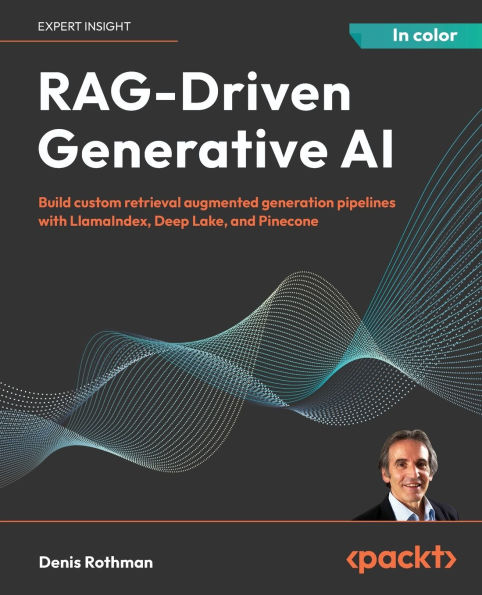Retrieval-Augmented Generation (RAG) in Large Language Models: Use Cases and Applications
Introduction
Retrieval-Augmented Generation (RAG) has emerged as a transformative technology that enhances the capabilities of Large Language Models (LLMs) by integrating information retrieval with text generation. By leveraging external knowledge bases, RAG improves response accuracy, reduces hallucinations, and ensures up-to-date contextual relevance in AI-generated content. This paper explores key use cases, implementation strategies, and available resources, including references and GitHub repositories, for deploying RAG systems effectively.
Key Use Cases
1. Customer Support Chatbots
RAG-powered chatbots access structured and unstructured knowledge bases to provide more precise and context-aware responses. This reduces response latency and the need for human intervention, enhancing customer satisfaction.
Example Implementations:
- Meta's BlenderBot 3 incorporates retrieval-augmented methods to refine its responses (GitHub).
- OpenAI's ChatGPT integrates dynamic retrieval methods to improve contextual awareness.
- LangChain Chatbot (GitHub) provides an open-source framework for developing RAG-based assistants.
References:
2. Healthcare and Medical Diagnostics
In healthcare, RAG supports clinical decision-making by retrieving medical literature and matching symptoms to potential diagnoses.
Case Studies:
- IBM Watson for Oncology utilizes RAG techniques to match treatment recommendations with expert oncologists 96% of the time (GitHub).
- BioGPT (GitHub) is a biomedical RAG model designed for medical literature retrieval.
References:
3. Personalized Learning and Tutoring
RAG enhances personalized e-learning experiences by dynamically retrieving and generating tailored educational content.
Case Studies:
- RAMO (Retrieval-Augmented Generation for MOOCs) personalizes course recommendations using LLMs.
- EdTech AI Tutors leverage RAG to offer customized study plans (GitHub).
References:
4. E-commerce and Product Recommendations
Major e-commerce platforms use RAG for intelligent product recommendations by integrating customer purchase history with retrieval-based suggestions.
Example Implementations:
- Amazon’s COSMO framework combines LLMs with a knowledge graph to enhance shopping experiences.
- Zalando’s AI-driven fashion assistant uses RAG for outfit suggestions (GitHub).
References:
5. Enterprise Knowledge Management
RAG enables enterprises to manage vast internal knowledge bases efficiently, improving information retrieval for employees.
Case Studies:
- Siemens Digital Assistant retrieves documents across multiple repositories using RAG.
- Microsoft Viva Topics leverages RAG to generate contextual enterprise knowledge graphs (GitHub).
References:
Open-Source Development Models
Open-source RAG models have been instrumental in advancing AI applications. The following models provide developers with accessible tools for implementing RAG solutions:
- Facebook AI’s RAG Model (GitHub) - A dense passage retrieval-based model optimized for document retrieval and generation.
- Hugging Face RAG Models (GitHub) - Includes pre-trained RAG implementations for various tasks.
- Haystack (GitHub) - An end-to-end framework for building RAG applications with scalable search and retrieval.
- ColBERT (GitHub) - A retrieval-based deep learning model optimized for RAG pipelines.
- LLamaIndex (GPT Index) (GitHub) - A lightweight library for creating LLM-based retrieval systems.
- RAGFlow (GitHub) - A scalable open-source RAG framework that integrates retrieval pipelines with transformer models for improved contextual generation.
Implementation Considerations
When developing RAG-powered applications, consider the following factors:
- Choosing the Right Framework: Tools such as LangChain (GitHub) and LlamaIndex (GitHub) simplify RAG implementation.
- Optimizing Retrieval Performance: Efficient document retrieval can be implemented using FAISS (GitHub) or Elasticsearch (GitHub).
- Maintaining Knowledge Base Quality: Continuous updates and filtering mechanisms ensure that retrieved data remains accurate and relevant.
- Scaling RAG Architectures: Distributed architectures like Haystack (GitHub) enable scalable RAG implementations.
Conclusion
RAG technology significantly enhances the capabilities of AI-driven applications across multiple industries. By integrating LLMs with retrieval mechanisms, organizations can improve the accuracy, relevance, and trustworthiness of AI-generated outputs. Developers can leverage existing open-source frameworks and research to build powerful RAG applications tailored to specific use cases.
Additional Resources
By adopting RAG technology, enterprises and developers can create AI systems that deliver more accurate and context-aware insights, driving efficiency and innovation across industries.



